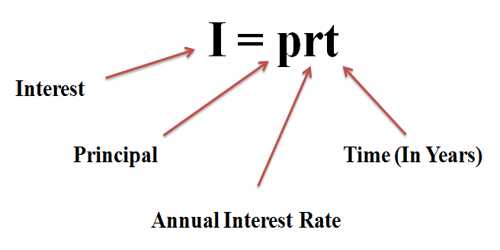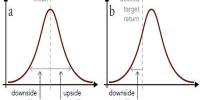Simple Interest
The interest rate is the amount charged, expressed as a percentage of principal, by a lender to a borrower for the use of assets. When money is borrowed, interest is charged for the use of that money for a certain period of time. When the money is paid back, the principal (amount of money that was borrowed) and the interest is paid back. The amount of interest depends on the interest rate, the amount of money borrowed (principal) and the length of time that the money is borrowed.
Simple interest is a quick method of calculating the interest charge on a loan. Simple interest is determined by multiplying the daily interest rate by the principal by the number of days that elapse between payments.
The formula for finding simple interest is Interest = Principal * Rate * Time. To calculate simple interest, use this formula: I = P x r x t
Explanation: Simple interest (I) is calculated by multiplying Principal (p) times the Rate (r) times the number of Time (t) periods.
If $100 was borrowed for 2 years at a 10% interest rate, the interest would be $100*10/100*2 = $20. The total amount that would be due would be $100 + $20 = $120.
Simple interest is generally charged for borrowing money for short periods of time. Compound interest is similar but the total amount due at the end of each period is calculated and further interest is charged against both the original principal but also the interest that was earned during that period.
Example
The second offer that Sarah has received is to borrow a principal amount P = $2,000, at an annual rate of 7%, over; t = 1 year. The rate; r must be converted from a percentage into decimal form, which means that we divide the percentage value 7% by 100 to get r = 0.07.
We now calculate the amount of interest Sarah would be charged if she accepts the loan offer just described:
I = PRT = (2,000)(0.07)(1) = $140.
Following our example, we determined that if Sarah accepts the second loan, the interest that she will owe the bank is $140. So, how much would Sarah have to pay the bank in order to pay off her debt? She would have to pay back the money she borrowed, or the principal, which is $2,000, and she would have to pay the bank the interest we calculated, in which I = $140. Thus, she will owe the bank $2,000 + $140, which equals $2,140. We note that this is still less than the $2,200 Sarah would have to pay if she accepts Loan One. Obviously, Loan Two is the better choice.
Information Source;
















